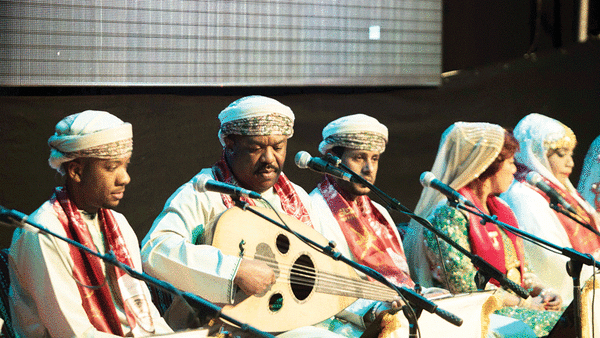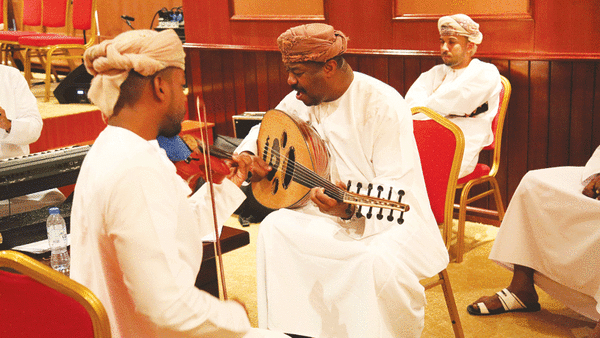

By Miaad Ali aL Darbi
Traditional singing and folk music are integral parts of Oman’s cultural heritage, showcasing a wide range of genres, performance styles, and regional variations.
Jumaa bin Faiel bin Rabi al Araimi, also known as Albrazili, is a highly regarded artist who has dedicated himself to preserving this ancient heritage. His unique style encompasses various aspects of Omani vocal arts, including playing the oud instrument and mastering different rhythms.
Jumaa bin Faiel, born in 1970 in Sur (Alsahel), hails from a family deeply rooted in traditional Omani arts such as Midan art, singing, and playing. Growing up, he was exposed to a rich tapestry of folk arts and rhythms, notably Midan art, Alsharh, and other local practices.

At the age of 15, he delved into mastering the rhythms associated with Midan art and Madima art. He started by playing the Msendo, a large drum supported by three legs made of tree trunks and covered with cow or camel skin. As he honed his skills, he progressed to playing the Al kasir, a drum shaped like an hourglass or barrel, covered with sheep or goat skin. Finally, he took on the challenging task of playing the Al Rahmani drum, an ornamental drum requiring extensive knowledge of rhythms. These drums, the Al Rahmani and Al kasir, are fundamental to Omani musical traditions.
Jumaa’s upbringing was steeped in Midan art, a popular form of Omani vocal music. This art form has a structured framework, specific principles, and rules of composition that are meticulously followed. Passed down through generations, Midan art has a strong foundation rooted in tribal traditions.
Jumaa drew inspiration from renowned artists and poets who were considered pillars of Midan art, such as a member of the Al Wazir family and the artist Yousef bin Obaid bin Yousef. He learned from them the art of composing Midan poetry. Jumaa continued to practice Midan art and participated in Midan sessions held during special occasions.
Jumaa’s first official appearance in Oman was during the Year of Heritage, where he contributed to a distinguished performance as part of the Youth Institute of Music. In 1993, he participated in the Oman Youth Ship event, which honoured young talents and welcomed delegations from the GCC countries. He also performed in various international events in Kuwait and Qatar. Continuing his artistic journey, Jumaa became a prominent member of the Oman Center for Traditional Music Ensemble, affiliated with the Sultan Qaboos Higher Centre for Culture and Science, an institution of the Royal Court.

The establishment of this centre was a testament to late Sultan Qaboos bin Said’s desire to preserve Oman’s traditional music. The centre’s mission focuses on safeguarding and promoting traditional Omani music, preserving its cultural identity, artistic qualities, and aesthetics, while nurturing the skills of young musicians. Jumaa actively contributed to reviving official and private celebrations alongside other talented members of the Centre Band. Notably, they participated in joyous festivities commemorating the Blessed Renaissance Day. Additionally, he conducted several training workshops on the art of sound, including one on Awadi singing.
Oman Observer is now on the WhatsApp channel. Click here


